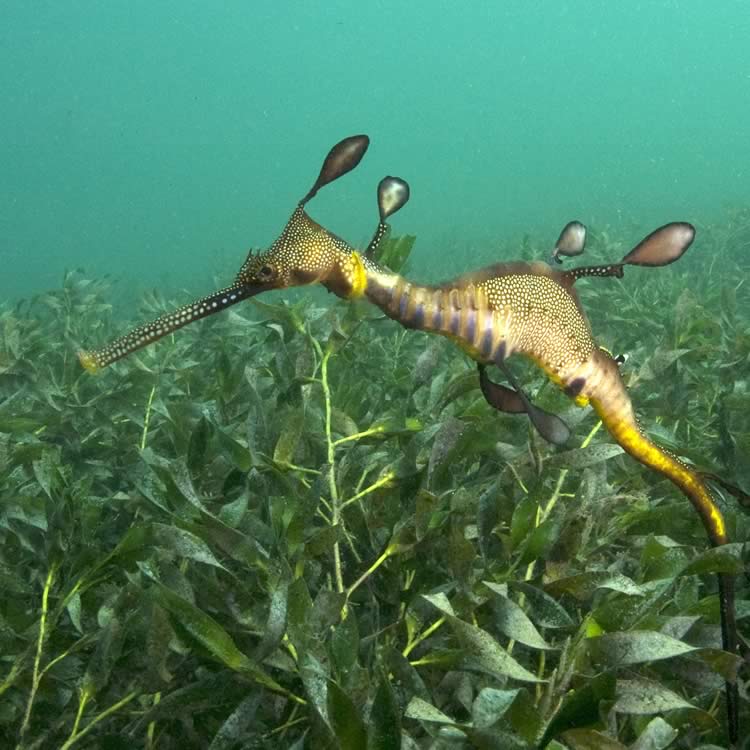Weedy seadragon

Community type
Habitat type
Rocky reefs, kelp beds and inter-tidal zone
Weedy seadragons are found only in southern Australia, inhabiting kelp forests, seagrass meadows and sponge gardens to depths of 50 m. Growing up to 46 cm long, the seadragon’s leafy body and special colours provide excellent camouflage among seaweed. As they are poor swimmers, they rely on this camouflage to hunt small crustaceans, sucking them into their long snouts with surprising power.
Weedy seadragons are one of the few species in the world whose males take care of the eggs. Females lay up to 250 eggs on the inside of the males’ tail, and he carries them with him until they hatch. Weedy seadragons are very shy creatures, and seeing one is a special experience. Most sightings in Tasmania occur near Bruny Island, but they are also regularly sighted in the Derwent Estuary on rocky reefs between Kingston and Blackmans Bay. The disappearance of kelp forests is a big threat to these special creatures, which may become endangered in the near future.
